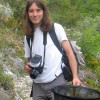Toxicity assessment on honey bee larvae of a repeated exposition of a systemic fungicide, boscalid.
- Simon-Delso, N. , San Martin, G. , Bruneau, E. , Hautier, L. & Medrzycki, P. (2017). Toxicity assessment on honey bee larvae of a repeated exposition of a systemic fungicide, boscalid. Bulletin of Insectology, 70: 83-89.
| Type | Journal Article |
| Year | 2017 |
| Title | Toxicity assessment on honey bee larvae of a repeated exposition of a systemic fungicide, boscalid. |
| Journal | Bulletin of Insectology |
| Volume | 70 |
| Pages | 83-89 |
| Abstract | Bees are key participators to the fertility of plants and yet they are suffering from losses and disorders. In other studies, double the amount of fungicides were found in colonies showing disorders than in healthy ones, with boscalid among the most frequently detected residues. Boscalid was mainly found in bee bread, main ingredient of larvae food and consequently exposing larvae to the compound in the long run. Here, we wanted to understand if boscalid could be toxic for immature stages of honey bees. Honey bee larvae were administered food to a range of doses from 0.04 to 40.25 µg boscalid/larva over 3 days. The NOED and LD50 at D8 were 4.025 µg a.i./larva and 86.786 µg a.i./larva, respectively; at D15 were 40.25 µg a.i./larva and 78.782 µg/larva, respectively; and at D22 were 40.25 µg/larva and 75.191 µg/larva, respectively. Worst-case field observed doses are 26 ppm in pollen and 1.43 ppm in nectar. Calculated concentration of boscalid safety for larvae would be 741 ppm for pollen and 27 ppm for nectar. However, our results with the active ingredient could be different than those observed for queen larvae, those obtained with the formulated product containing boscalid or in the field considering the exposure of bee hives to multiple pesticide contaminants. |
| Fichier | |
| Lien | http://www.bulletinofinsectology.org/pdfarticles/vol70-2017-083-089simon-delso.pdf |
| Authors | Simon-Delso, N., San Martin, G., Bruneau, E., Hautier, L., Medrzycki, P. |


